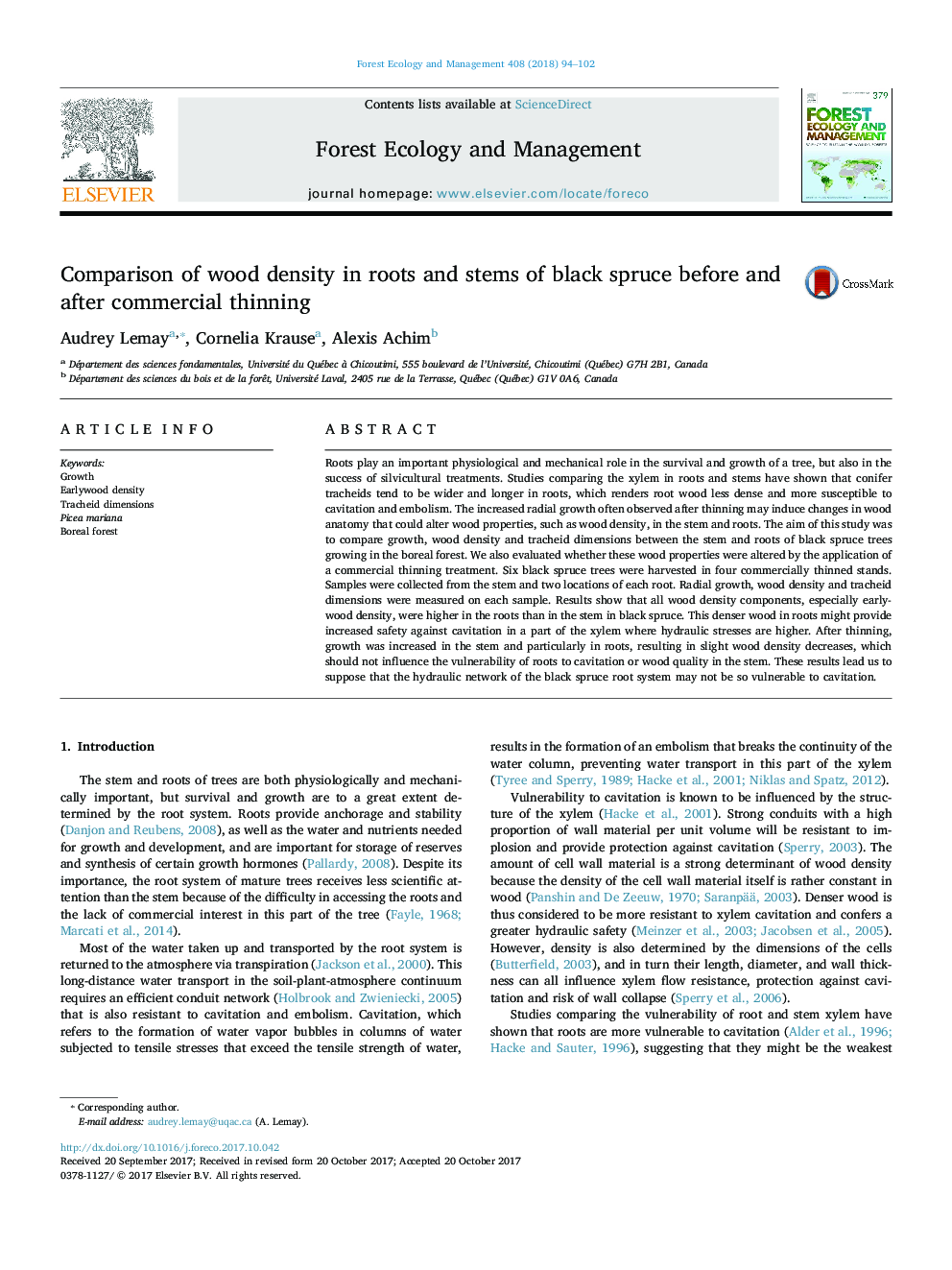| کد مقاله | کد نشریه | سال انتشار | مقاله انگلیسی | نسخه تمام متن |
|---|---|---|---|---|
| 6541907 | 1421350 | 2018 | 9 صفحه PDF | دانلود رایگان |
عنوان انگلیسی مقاله ISI
Comparison of wood density in roots and stems of black spruce before and after commercial thinning
ترجمه فارسی عنوان
مقایسه تراکم چوب در ریشه ها و ساقه های صنوبر سیاه قبل و بعد از ریزش تجاری
دانلود مقاله + سفارش ترجمه
دانلود مقاله ISI انگلیسی
رایگان برای ایرانیان
موضوعات مرتبط
علوم زیستی و بیوفناوری
علوم کشاورزی و بیولوژیک
بوم شناسی، تکامل، رفتار و سامانه شناسی
چکیده انگلیسی
Roots play an important physiological and mechanical role in the survival and growth of a tree, but also in the success of silvicultural treatments. Studies comparing the xylem in roots and stems have shown that conifer tracheids tend to be wider and longer in roots, which renders root wood less dense and more susceptible to cavitation and embolism. The increased radial growth often observed after thinning may induce changes in wood anatomy that could alter wood properties, such as wood density, in the stem and roots. The aim of this study was to compare growth, wood density and tracheid dimensions between the stem and roots of black spruce trees growing in the boreal forest. We also evaluated whether these wood properties were altered by the application of a commercial thinning treatment. Six black spruce trees were harvested in four commercially thinned stands. Samples were collected from the stem and two locations of each root. Radial growth, wood density and tracheid dimensions were measured on each sample. Results show that all wood density components, especially earlywood density, were higher in the roots than in the stem in black spruce. This denser wood in roots might provide increased safety against cavitation in a part of the xylem where hydraulic stresses are higher. After thinning, growth was increased in the stem and particularly in roots, resulting in slight wood density decreases, which should not influence the vulnerability of roots to cavitation or wood quality in the stem. These results lead us to suppose that the hydraulic network of the black spruce root system may not be so vulnerable to cavitation.
ناشر
Database: Elsevier - ScienceDirect (ساینس دایرکت)
Journal: Forest Ecology and Management - Volume 408, 15 January 2018, Pages 94-102
Journal: Forest Ecology and Management - Volume 408, 15 January 2018, Pages 94-102
نویسندگان
Audrey Lemay, Cornelia Krause, Alexis Achim,
